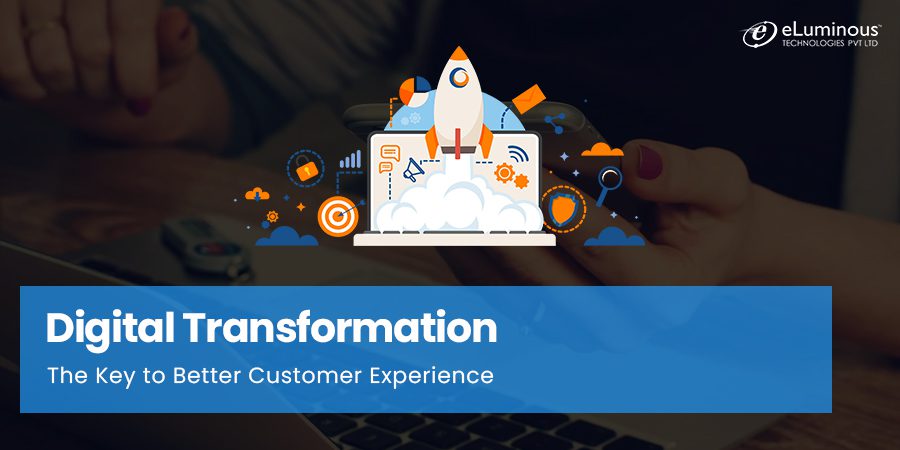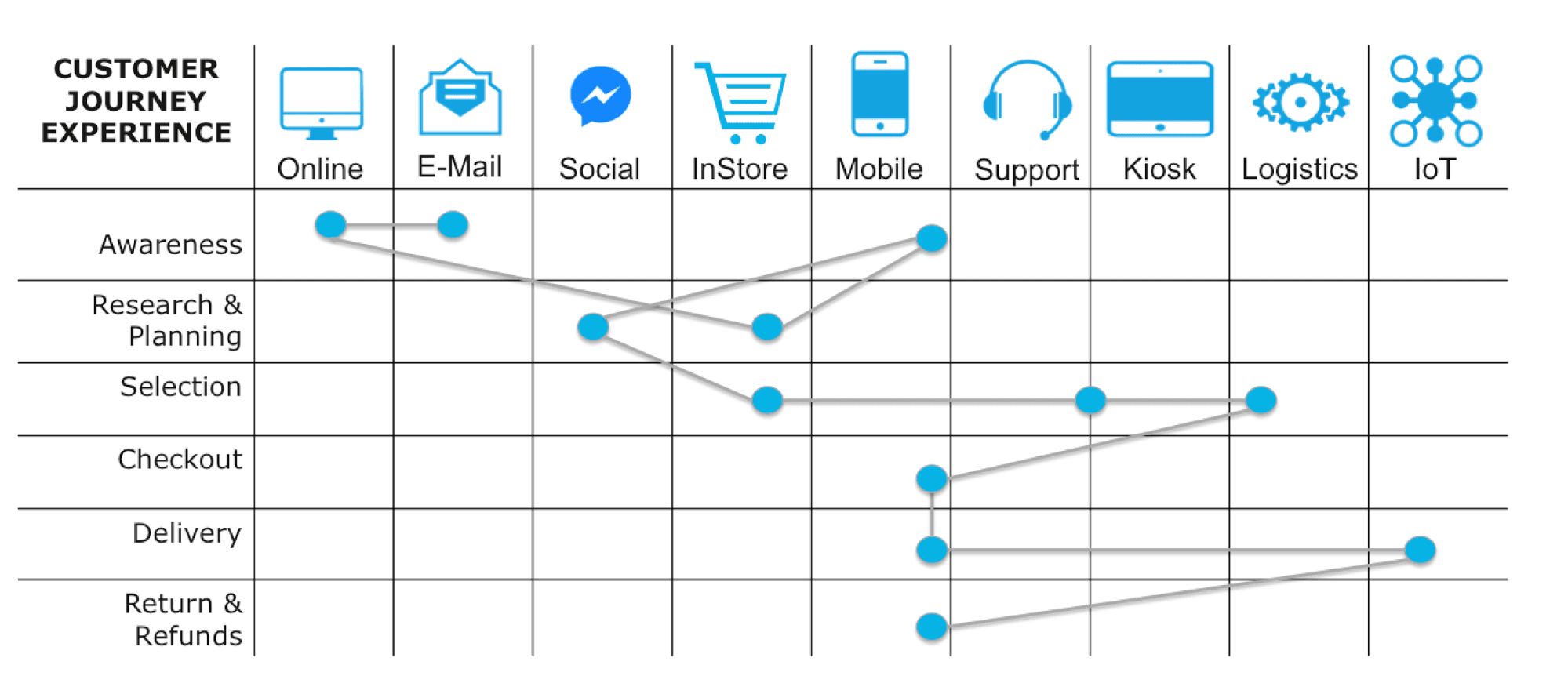There’s the carrot and there’s the stick. Technically, both those terms cannot apply to the same thing. That is to say, if something is a carrot to persuade you to do something, it cannot possibly be also a stick to punish you with if you don’t do that thing.
But that’s exactly what one can say about customer experience in the context of digital transformation. The most notable benefit a business enjoys with digital transformation is better customer experience, ala the carrot. But if the business doesn’t adopt a digital transformation strategy or does a half-baked job of it, poor customer experience is guaranteed, ala the stick.
CEOs world over seem to have realized this as per an IDC research, which shows that over 66% of them leading over 2,000 global businesses plan to move from traditional strategies to digital ones by 2020 so that they can offer better customer experience.
Does this have you wondering what is the connection between digital transformation and customer experience?
If so, read on to know the answer. Along the way, you’ll also learn about the importance of customer experience and how digital technology can be employed in customer experience management.
The Importance of Customer Experience
In the digital era, customer experience management is considered to be the biggest differentiator for a business. That’s because customers are increasingly connecting brand loyalty not to lower prices or discounts but to better experiences. And such loyalty and preferences can be a huge advantage for businesses.
For instance, LTV (Lifetime Value) of consumers who have an emotional connection to a brand is shown to be 306% higher. Similarly, 67% of individual consumers are ready to pay more for a great experience. The figure for their business counterparts (B2B buyers) is even higher at 74%.
How Digital Transformation is Driving Customer Experience?
To understand the importance of technology in customer service, let’s quickly look at what is digital transformation. Salesforce defines it as “the process of using digital technologies to create new — or modify existing — business processes, culture, and customer experiences to meet changing business and market requirements.” In this context, digital transformation is about using digital technology to deliver a better customer experience.
The modern-day consumer and this applies to all age groups, has either developed a digital-first mentality or grown up with one. Such a mindset leads to an ever-growing expectation of speed and personalization. For proof of this impact of digital transformation on customer experience, just look at how Amazon, Uber, or Airbnb have changed the way consumers expect to shop, hail a taxi, or plan their vacation, respectively.
These consumers want to transact quickly and at the time and place of their choosing. They also prefer doing this through multiple digital channels such as social media, instant messaging apps, AI chatbots, and even SMS. Such diverse and high-number of touchpoints can strain your ability to offer a consistent customer experience.
Since such expectations will only grow in the future, you need to invest in business intelligence and data analytics that use customer data to create personalized, predictive, and consistent customer experiences. In other words, the choice is between digitally transforming your business and losing customers to smarter, technologically-enabled competitors.
Read more: What is Digital Transformation & How Can You Achieve It?
How Digital Transformation Can Improve Customer Experience?
1. Personalization
Consumers today are spoilt for choice. This pulls them towards brands that offer unique digital customer experience and cater to their specific needs. At the same time, they’re open to brands tailoring their experience as per previous purchase or browsing history. Just look at Amazon and what a success its ‘products you might like’ suggestion feature has been.
Such tactics are rooted in numbers too as an Accenture study showed that 75% of consumers confirmed they’re more likely to purchase from a brand that addresses them by name, knows their purchase history, or suggests products based on this history.
The surprising part is that customers are willing to share personal data such as age, interests, location, etc. in return for a better experience. This makes it a no-brainer for businesses to collect, analyze, and use customer data to offer more personalized experiences. And as business intelligence and data analytics evolve, it’ll be possible to create granular targeted messages that appeal to an individual’s or business’s very specific needs.
2. Automation
While businesses were already drawn towards automation for their time and monetary benefits, the more unexpected and invaluable advantage was better customer experience management. With a digital transformation strategy, every aspect of your business ranging from email marketing to CRM can be automated to offer a smooth and seamless online customer experience.
And again, customers are leading from the front as this Accenture survey shows that 84% of them claim to be more comfortable interacting with AI-based applications than with human personnel. Hardly a wonder then that the global chatbot market is expected to hit $9.4 billion by 2024.
An automated setup is not just faster to engage with but also frees up your employees to focus on more important and abstract issues that your customers might struggle with.
3. AI and Predictive Analytics
AI-enabled technologies such as chatbots form the ‘reactive’ component of digital customer experience. There’s also a branch of digital transformation that uses AI to improve customer experience in a more ‘proactive’ manner.
BI (Business Intelligence) and Predictive analytics take personalization a step further by using a customer’s past data to map their probable future journey with your business. This helps you to create a profile for each customer and personalize your offerings accordingly.
Predictive analytics uses data such as demographics and purchase history to determine what and when a customer might buy from you next. Armed with this information, you can create personalized messages and content that not only remind your customer that it’s time to buy but also introduce them to an upgrade (an upsell).
Predictive analytics is a departure from the past when businesses could only tweak their strategy based on past data. But here, you can use Business Intelligence and data analytics to adjust your strategy based on what is likely to happen in the future. One of the best digital customer experience examples of this type is Netflix, which pipped YouTube to become the most-viewed digital video channel by deploying predictive analytics to keep users hooked with recommendations.
Read more: Why Medium Scale Enterprises Should Ditch Spreadsheets for Data Analytics?
4. Omnichannel Experience
Did you know that less than 15% of online shoppers start and finish a transaction on the same device? This confirms that whether you’re into B2C or B2B, your customer’s buying journey is likely to be what the figure below illustrates. With so much fragmentation in device usage, the stress will show on your customer experience sooner rather than later if you don’t adopt digital transformation.
A ‘2013’ customer experience transformation report by Accenture says that 65% of customers get frustrated if their experience is not consistent across devices and platforms. We’ve put the quote marks on purpose to highlight that the choice of devices and platforms has grown exponentially since 2013. Today, the customer expects new interactions via different platforms to be an extension of the same journey.
The solution, as such, lies in a true omnichannel experience. This includes blending digital channels (social media, mobile, analytics, cloud) with traditional ones (phone support, offline store). For instance, invest in a mobile-ready responsive website, a cross-platform app, and a social media presence that helps customers get in touch with you any time, from any device.
Read more: What is Headless Commerce & How Can It Help Your Ecommerce Business?
Over to You
For today’s consumers, the world is at their fingertips while their attention is as wide as that fingertip. This means that not only does your business compete with other businesses for the consumer’s attention, it also has to jostle for consumer mind space with indirect competitors such as social media, media streaming apps, gaming apps, news, etc.
As such, offering a better and more seamless customer experience by digitally transforming your business is the only way to win, retain, and upsell your customers. Therein lies the carrot as well as the stick.
Do you want to know how to digitally transform your business and how to improve the digital customer experience? Get in touch with us now. Our team of Business intelligence and data analytics experts has helped businesses across the USA, Europe, Asia-Pacific, and Africa successfully implement digital transformation and customer experience strategies.
Thank you for reading! If you liked this post, do subscribe to get informative posts about web and mobile development, data analytics, and eCommerce delivered to your inbox.
Digital Marketing Manager
Responsible for developing and managing web presence, Sarah has been associated with eLuminous Technologies for 7+ years. Strategic and innovative with a passion for Content Marketing and enhancing brand awareness. Administered all business marketing operations and advertisement campaigns that eventually increased web traffic. She works under the motto “Think like a Publisher, not a Marketer.”




